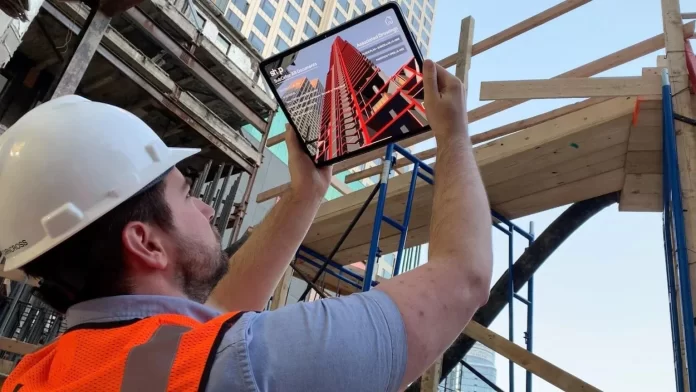As technology advances rapidly, augmented reality (AR) is one of the many innovations substantially impacting various industries. The construction sector, characterized by complex projects and precision-driven tasks, is reaping the benefits offered by this immersive technology.
AR merges the natural world with the digital, enhancing our sensory perception and providing a rich, interactive experience that can change our understanding of construction processes. In this blog, we will look at seven groundbreaking applications of AR in construction that are revolutionizing the industry – from design and planning through on-site construction and post-project maintenance.
These examples will demonstrate AR’s potential as an efficient, safe, and accurate means of improving construction industry operations.
After reading today’s post, check out XYZ Reality’s 7 applications for augmented reality (AR) in construction.
Table of Contents
What is augmented reality?
Augmented reality is an emerging technology that seamlessly merges the virtual and physical realms – creating an immersive environment in which computer-generated elements such as images, sounds or GPS data become part of our physical surroundings.
There are three primary characteristics of AR:
- Combination of real and virtual worlds: Unlike virtual reality (VR) – which offers an immersive virtual environment – augmented reality superimposes digital information onto physical realities.
- Interactive in real-time: AR environments employ digital elements that react and interact in real-time, enabling users to engage with both physical and virtual elements at the same time.
- Use of 3D: AR operates in three dimensions, making the digital overlays align and interact with the real world in a natural and intuitive way.
These defining features enable AR to facilitate various applications across various sectors, including construction, where it can enhance visualization, improve precision, and promote safer and more efficient work practices.
Seven innovative applications of augmented reality in construction
Here are seven augmented reality applications in the construction industry, exploring how they transform traditional processes and pave the way for the future.
-
Design visualization
AR allows architects and engineers to visualize their designs in a realistic and immersive environment beyond the confines of a 2D screen. They can make real-time adjustments, foresee potential issues, and better communicate their ideas. For example, AR can provide a 360-degree view of a building’s design before the construction begins.
-
On-site assembly
AR can provide a virtual overlay of the building plan on the construction site, guiding workers during assembly. This improves accuracy, speed, and safety. For instance, a worker wearing an AR headset could see exactly where a beam needs to be placed in real-time.
-
Predictive maintenance
AR can make post-construction maintenance easier and more efficient by providing a detailed overlay of the building’s internal systems, such as plumbing or electrical wiring. This helps maintenance staff easily locate any potential issues.
-
Safety training
AR can simulate dangerous scenarios on construction sites for training purposes without putting workers at risk. Workers can practice handling these situations effectively, thereby improving overall site safety.
-
Collaborative decision making
With AR, multiple stakeholders can view and interact with the same model simultaneously, even from different locations. This enhances collaboration and speeds up decision-making processes.
-
Quality assessment
AR technology can help conduct quality assessments of work by overlaying digital models onto the physical construction. This allows any discrepancies to be spotted and addressed promptly.
-
Resource management
AR can provide a real-time view of resource allocation and usage, assisting in the efficient management of materials, machinery, and manpower. The technology can also help in tracking the delivery and placement of materials on site.
7 innovative applications of augmented reality – Conclusion
Augmented reality is proving to be a game-changer in the construction industry. Its ability to blend the virtual and the real, interact in real-time, and operate in three dimensions is transforming how we design, construct, and maintain our built environments.
From enhancing design visualization to improving on-site safety and resource management, AR applications offer an innovative approach to traditional construction practices. As AR technology evolves and becomes more deeply integrated into our processes, we can anticipate a future where construction is more efficient, safer, sustainable, and creative..
















